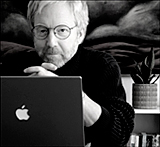AnyWhen Ensemble at the Phillips Collection
By Stephen Brookes • The Washington Post • February 23, 2015
The lines between musical genres have become so thoroughly blurred in the postmodern world (viz. the premiere of Wynton Marsalis’s “Blues Symphony” a few weeks ago at Strathmore) that they barely exist anymore. And that’s a good thing, particularly for imaginative young composers such as Douglas Detrick, who brought his AnyWhen Ensemble to the Phillips Collection on Sunday afternoon for “The Bright and Rushing World” — an extended, 10-movement suite that draws naturally from the jazz and classical worlds.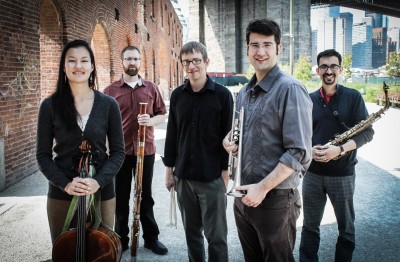 The AnyWhen Ensemble. (Eric Vitale)Detrick describes the work as a journey — a young man heading out into the world for the first time — and it opened with the composer on trumpet laying out the theme that runs through the work. The other members of the quintet (saxophones, cello, bassoon and drum set) soon joined in, and over the next hour, engaged in a sort of picaresque roam through Detrick’s sound-world, forming and reforming into different combinations, shifting from one colorful, and often engaging, episode to the next.
The AnyWhen Ensemble. (Eric Vitale)Detrick describes the work as a journey — a young man heading out into the world for the first time — and it opened with the composer on trumpet laying out the theme that runs through the work. The other members of the quintet (saxophones, cello, bassoon and drum set) soon joined in, and over the next hour, engaged in a sort of picaresque roam through Detrick’s sound-world, forming and reforming into different combinations, shifting from one colorful, and often engaging, episode to the next.
Despite some fine playing by all the instrumentalists, it was a rather mild journey, and the work never seemed to gain much traction. Less “bright and rushing” than subdued and meandering, it came across as a succession of meditative sketches, with ideas suggested, gently passed around and then set aside, without developing a strong narrative or building into a powerful whole. And whenever the music started to come alive — as it did several times with a sense of urgency and purpose and direction, it would suddenly shy away and retreat to musical navel-gazing. Pleasant enough, but without much sense of risk or passion or of anything really at stake. By the end, you felt like you’d been on a stroll around the block rather than a journey into the burning heart of life.
That said, Detrick has a fine ear for timbre and texture, a mastery of classical and jazz styles, and an engaging technique on the trumpet. The AnyWhen players — Hashem Assadullahi on saxophones, Shirley Hunt on cello, Steve Vacchi on bassoon and Ryan Biesack at the drum set — played beautifully together, with obvious rapport and a fine sense of balance.
Simon Shaheen at Sixth & I Historic Synagogue
By Stephen Brookes • The Washington Post • February 8, 2015
Simon Shaheen, the much-admired Palestinian violin and oud virtuoso, brought his ensemble to the Sixth & I Historic Synagogue on Saturday night for a concert that fused traditional Middle Eastern music with everything from jazz to flamenco to Indian ragas. That may sound like a recipe for the soggy, superficial mush that often gets passed off as “world fusion” music, but the evening turned out to be a probing, personal and convincing exploration of the currents that run through different musical traditions — and tie the ancient past to the 21st century.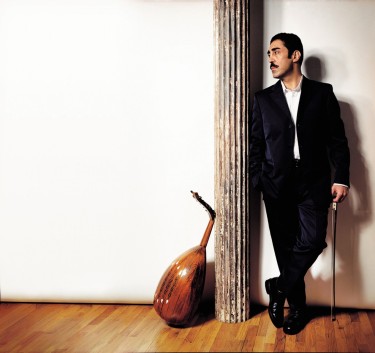 Shaheen has long been at the forefront of new Arabic music, and much of the evening was devoted to his own compositions, from a medley built around “Saraab” (an atmospheric work that evokes mirages and the slow, rolling rhythms of a caravan through the desert) to the jazzy, flamenco-flavored “Al-Qantara.” Arabic to its core, steeped in tradition but unconstrained by it, Shaheen’s music seemed always to be reaching into history to discover the meaning of the present — and the beauty it found there was striking. Bassam Saba’s captivating, shape-shifting improvisations on reed flute in “Saraab” were poignant in an almost otherworldly way, and the improvisations (known as “taqasim”) by all the players — particularly Shaheen’s brother Najib on oud — favored subtlety and expressiveness over mere displays of virtuosity.
Shaheen has long been at the forefront of new Arabic music, and much of the evening was devoted to his own compositions, from a medley built around “Saraab” (an atmospheric work that evokes mirages and the slow, rolling rhythms of a caravan through the desert) to the jazzy, flamenco-flavored “Al-Qantara.” Arabic to its core, steeped in tradition but unconstrained by it, Shaheen’s music seemed always to be reaching into history to discover the meaning of the present — and the beauty it found there was striking. Bassam Saba’s captivating, shape-shifting improvisations on reed flute in “Saraab” were poignant in an almost otherworldly way, and the improvisations (known as “taqasim”) by all the players — particularly Shaheen’s brother Najib on oud — favored subtlety and expressiveness over mere displays of virtuosity.
Some of the most provocative music, though, came when the young sarod player Sashank Navaladi joined the ensemble for improvisations with Shaheen on two Indian ragas. The Raag Jhinjhoti and the Raag Rageshri are both late-evening ragas, and Shaheen (first on oud and later on violin) opened by trading dark, brooding lines with Navaladi. As the pace slowly picked up, the music seemed to shift away from Indian traditions and toward those of the Middle East — drawing, with great naturalness and insight, a connection between the two.
That sense of connection — and of deep authenticity — was the hallmark of the evening, which included works by such notable Arab composers as Mohammad Al Qassabji, whose “Zikrayati” was both elegant and deeply expressive. But it may have been the fiery closing finale by Egyptian composer (and oud player) Riyad al-Sunbati that provided the most excitement of the evening — and brought the audience to a standing ovation.
Kristóf Baráti at the Phillips Collection
By Stephen Brookes • The Washington Post • January 19, 2015
There’s nothing easy about 90 minutes of solo violin music. It’s a high-wire act for any violinist — not only must he carry the concert’s entire melodic, harmonic and rhythmic weight single-handedly; he also must make the music so compelling that any limitations of the solo form just seem to vanish. The challenges are huge, but as the Hungarian virtuoso Kristóf Baráti proved in a gripping, extraordinarily powerful performance at the Phillips Collection on Sunday, so are the rewards.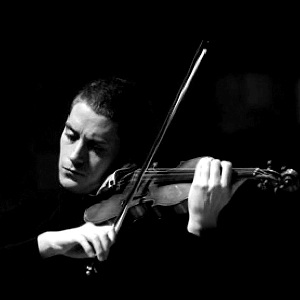 Kristóf BarátiThe six sonatas and partitas that Bach wrote for unaccompanied violin make up the spiritual heart of this repertoire, and Baráti opened with two Bach-inspired sonatas from 1924 by the celebrated Belgian violinist Eugène Ysaÿe. Rather than tossing off these virtuosic showpieces as mere appetizers, though, Baráti probed into them with extraordinary intensity and an almost orchestral range of expression. Virtually motionless, eyes closed to the world, he seemed to immerse himself in the sonatas as much as play them — a self-effacing lack of showmanship that let the music emerge with unexpected power.
Kristóf BarátiThe six sonatas and partitas that Bach wrote for unaccompanied violin make up the spiritual heart of this repertoire, and Baráti opened with two Bach-inspired sonatas from 1924 by the celebrated Belgian violinist Eugène Ysaÿe. Rather than tossing off these virtuosic showpieces as mere appetizers, though, Baráti probed into them with extraordinary intensity and an almost orchestral range of expression. Virtually motionless, eyes closed to the world, he seemed to immerse himself in the sonatas as much as play them — a self-effacing lack of showmanship that let the music emerge with unexpected power.
But if the Ysaÿe works were impressive, Baráti’s reading of Bach’s Partita No. 2 in D Minor, (BWV 1004) — the concert’s center of gravity — was nothing less than revelatory. A five-part dance suite that concludes with a searing chaconne, the partita may be the greatest of all works for solo violin, and Baráti’s performance was, in a word, masterful. Probing, austere, meditative, it rang with a rare sense of authenticity and almost majestic scope.
Bach was also the inspiration for Béla Bartók’s Sonata for Solo Violin, BB 124,— which opens with a chaconne-like movement — and Baráti turned in a reading that was almost painful in its intensity of feeling. The work pushes the violin to the limits with a wildly inventive palette of sounds, and its often wrenching emotional landscape (it was written in 1944) makes it a work not for the faint of heart. But Baráti played it with such insight and understanding that the audience erupted in a sustained standing ovation at the end, bringing him back for an encore, Paganini’s Caprice No. 1.
Kennedy Center Chamber Players at the Terrace Theater
By Stephen Brookes • The Washington Post • January 12, 2015
Orchestras tend to be cautious things, obliged by economics to stick to well-trod musical paths. So it’s always interesting to hear members of the National Symphony Orchestra play chamber music, where they can be as adventurous as they like. That was the case at the Terrace Theater on Sunday afternoon, when the Kennedy Center Chamber Players presented such unusual, rarely heard music as the modernism of Bela Bartok to the lush romanticism of Anton Arensky.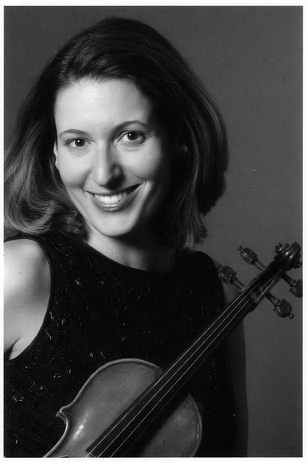 Mariss RegniViolinists Marissa Regni and Jane Stewart opened the program with a dozen brief duos by Bartok. Written in the early 1930s as technical studies for the violin, they were never intended for performance, but Bartok being Bartok, neither are they light throwaways. Biting, playful, introspective and steeped in Hungarian folk music, the duos were as challenging expressively as they were technically, and Regni and Stewart made them sing. Regni was then joined by NSO principal cellist David Hardy for Maurice Ravel’s Sonata for Violin and Cello. The afternoon’s most familiar work, it also was its deepest and most accomplished — a lean, taut work that Hardy and Regni treated with the cut-to-the-bone seriousness it deserves.
Mariss RegniViolinists Marissa Regni and Jane Stewart opened the program with a dozen brief duos by Bartok. Written in the early 1930s as technical studies for the violin, they were never intended for performance, but Bartok being Bartok, neither are they light throwaways. Biting, playful, introspective and steeped in Hungarian folk music, the duos were as challenging expressively as they were technically, and Regni and Stewart made them sing. Regni was then joined by NSO principal cellist David Hardy for Maurice Ravel’s Sonata for Violin and Cello. The afternoon’s most familiar work, it also was its deepest and most accomplished — a lean, taut work that Hardy and Regni treated with the cut-to-the-bone seriousness it deserves.
The viola is often overshadowed in chamber music by its siblings in the string family, so the unusual Fantasia for Four Violas, Op. 41, No. 1, by British composer York Bowen, was something of a revelation. A quartet of violas might sound like too much of a good thing, but this warm, elegiac work conjures a striking range of textures and effects and handles them masterfully. It’s heartfelt (in a restrained, English way, of course) and elegant, perhaps a bit stuffy to modern ears but well worth hearing nonetheless.
The music of Arensky — a Russian prodigy who studied with Rimsky-Korsakov, drank himself to death at age 45 and, oddly, has a glacier in the Antarctic named after him — is not widely heard anymore, but his Quartet for Violin, Viola, and Two Cellos, Op. 35, from 1895, is a gem. The profound, introspective work written in memory of Tchaikovsky uses the two cellos to beautiful effect, adding depth and darkness without heaviness. The Kennedy Center players brought searing expressive purpose to the music, particularly in the massive second movement, with its elaborate variations on a theme of Tchaikovsky’s.
Baltimore Consort at the National Gallery of Art
By Stephen Brookes • The Washington Post • December 15, 2014
You didn’t have to be a fan of El Greco to enjoy the National Gallery of Art’s musical homage to the Spanish Renaissance painter on Sunday evening. (The gallery is celebrating the 400th anniversary of the painter’s death.) In fact, the concert was more a foil to El Greco’s thundering religious intensity than a reflection of it, with the Baltimore Consort presenting a colorful, wide-ranging program of Renaissance music that was long on charm and cheerfully short on religious fervor.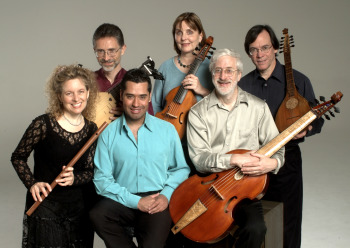 Much of that charm came from the music itself, a collection of secular romances, dances and popular songs known as villancicos that would have been popular around the turn of the 17th century, when El Greco lived in Spain. Drawn largely from court songbooks of the time, the program wove tender love songs together with virtuosic instrumental works and comic songs from such composers as Juan del Encina, Alonso Mudarra and Diego Ortiz (and, of course, the ubiquitous “Anonymous”), with superb playing from the consort’s virtuosi, particularly Ronn McFarlane on lute and Mindy Rosenfeld on flute and recorder.
Much of that charm came from the music itself, a collection of secular romances, dances and popular songs known as villancicos that would have been popular around the turn of the 17th century, when El Greco lived in Spain. Drawn largely from court songbooks of the time, the program wove tender love songs together with virtuosic instrumental works and comic songs from such composers as Juan del Encina, Alonso Mudarra and Diego Ortiz (and, of course, the ubiquitous “Anonymous”), with superb playing from the consort’s virtuosi, particularly Ronn McFarlane on lute and Mindy Rosenfeld on flute and recorder.
But it was Brazilian countertenor José Lemos who really stole the spotlight. Lemos was front and center for most of the evening, bringing a light touch, engaging wit and perfect control to everything he sang, from the flirtatious “Yo me soy la morenica” to Juan del Encina’s comical “Cucú, Cucú, Cucucú.” The gallery’s West Garden Court tends to swallow soft-voiced Renaissance instruments — viols and baroque guitars are no match for its swampy acoustics — but Lemos set his voice perfectly against the consort players, bringing deep feeling and a deft, improvisatory freshness to the music.
Einav Yarden at the Phillips
By Stephen Brookes • The Washington Post • December 8, 2014
In “Oscillations” — her debut album released earlier this year — the Israeli pianist Einav Yarden paired Beethoven with Stravinsky to striking effect, tying that unlikely couple together with imagination and exceptionally vivid playing. She brought those same qualities to a recital of Bach, Ravel and Schubert at the Phillips Collection on Sunday, and while the afternoon may have been a bit short on adrenaline — this was not a keyboard-thrashing display of virtuosity — it showed Yarden to be a probing, incisive pianist with a beautiful sound and an impressively transparent touch. 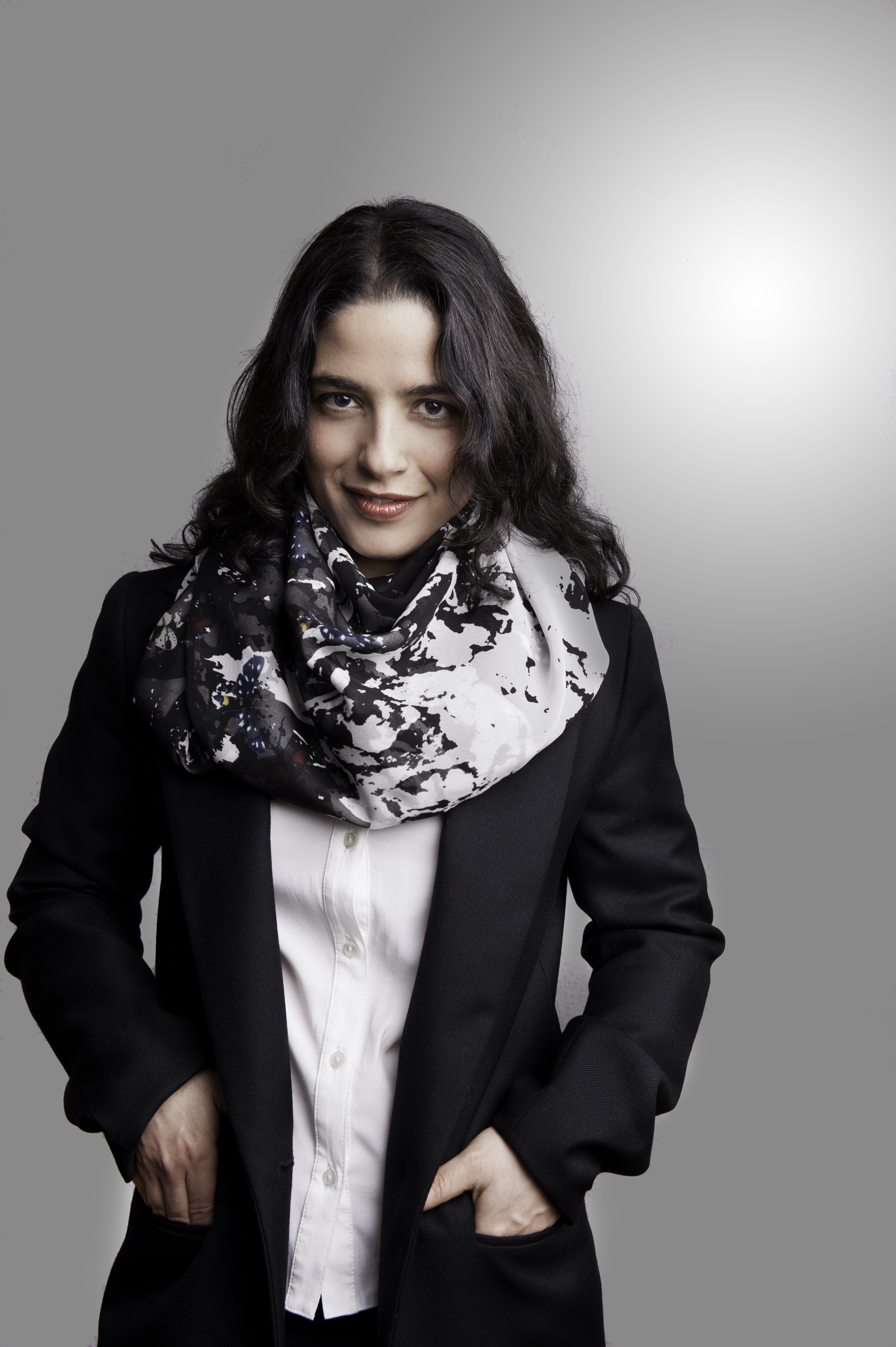 Photo by Georg ThumThat transparency was quickly evident in Bach’s “ English Suite No. 2 in A minor,” which opened the program. If you like Glenn Gould’s Bach, you’ll like Yarden’s: crystalline and precisely balanced down to its molecules, with superb voice-leading and a sense of purpose in every note. Yarden might not have the hyper-immaculate technique that’s become the new normal in classical music, but if you looked past the minor flubs, she turned in a reading that had something much more important: a sense of immense majesty, tempered with gentleness and quiet grace.
Photo by Georg ThumThat transparency was quickly evident in Bach’s “ English Suite No. 2 in A minor,” which opened the program. If you like Glenn Gould’s Bach, you’ll like Yarden’s: crystalline and precisely balanced down to its molecules, with superb voice-leading and a sense of purpose in every note. Yarden might not have the hyper-immaculate technique that’s become the new normal in classical music, but if you looked past the minor flubs, she turned in a reading that had something much more important: a sense of immense majesty, tempered with gentleness and quiet grace.
Maurice Ravel’s “Valses Nobles et Sentimentales” from 1911 gave Yarden the opportunity to display her more lyrical side. This suite of eight waltzes still sounds adventurous and even edgy, and Yarden seemed to revel in its quick shifts of light and dark, its shimmering textures and its playful, sly wit — bringing the same clarity to Ravel that she brought to Bach.
Piano recitals often close with a high-octane piece designed to get the pulse racing, but Yarden chose Schubert’s “Piano Sonata in G Major, D. 894” — a work that glows with serenity for a good half hour, then just sort of falls asleep. There’s little of the heaven-storming that Schubert dishes out in his other sonatas, but Yarden brought a quiet sense of drama to the work, and the delicate mix of wistfulness and thundering that she found in the Andante was worth the price of admission.
Still, it was a welcome treat to hear Stravinsky’s “Piano-Rag-Music” as an encore. This spirited, jagged work from 1918 (think Cubist jazz, with a Russian edge) is not often heard — and Yarden’s quick, lively reading brought it alive.
Hans Abrahamsen at The Phillips Collection
By Stephen Brookes • The Washington Post • November 24, 2014
It's probably fair to say that Hans Abrahamsen is not the world’s most exciting composer. His music is deliberately spare, enigmatic, understated. It moves about as quickly as a glacier on valium. Simple musical gestures are repeated, and repeated, and then repeated some more. If you’re looking for drama or exuberance or gut-wrenching passion in music — or even just evidence of a pulse — this rather muted Danish composer may not be your cup of tea.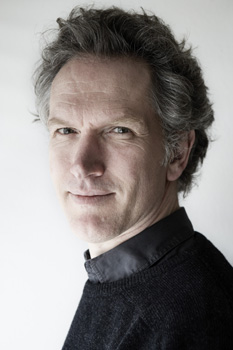 Hans AbrahamsenBut Abrahamsen has his champions, including the formidable young Jack Quartet, which performed all four of his string quartets on Sunday afternoon at the Phillips Collection as part of the gallery’s Leading European Composers series. The works trace an arc through the composer’s career, from the teenaged Quartet No. 1 (“Ten Preludes”) from 1973, to the gentle last quartet, completed in 2012 after 20 years of gestation, and often display considerable musical imagination and mastery of a range of styles.
Hans AbrahamsenBut Abrahamsen has his champions, including the formidable young Jack Quartet, which performed all four of his string quartets on Sunday afternoon at the Phillips Collection as part of the gallery’s Leading European Composers series. The works trace an arc through the composer’s career, from the teenaged Quartet No. 1 (“Ten Preludes”) from 1973, to the gentle last quartet, completed in 2012 after 20 years of gestation, and often display considerable musical imagination and mastery of a range of styles.
Yet despite a committed performance from the Jack players, the overall effect was, in the end, underwhelming. Abrahamsen should be taken on his own terms, of course, and the distant, withheld writing that runs through these works has a certain serene beauty.
But there’s a fine line between transcendent minimalism and brain-crushing tedium, and the flashes of poetry and fire in Abrahamsen’s music often seemed to wash away in a sea of musical thumb-twiddling. Patience — much patience — was required, and in the end, little of importance seemed revealed.

